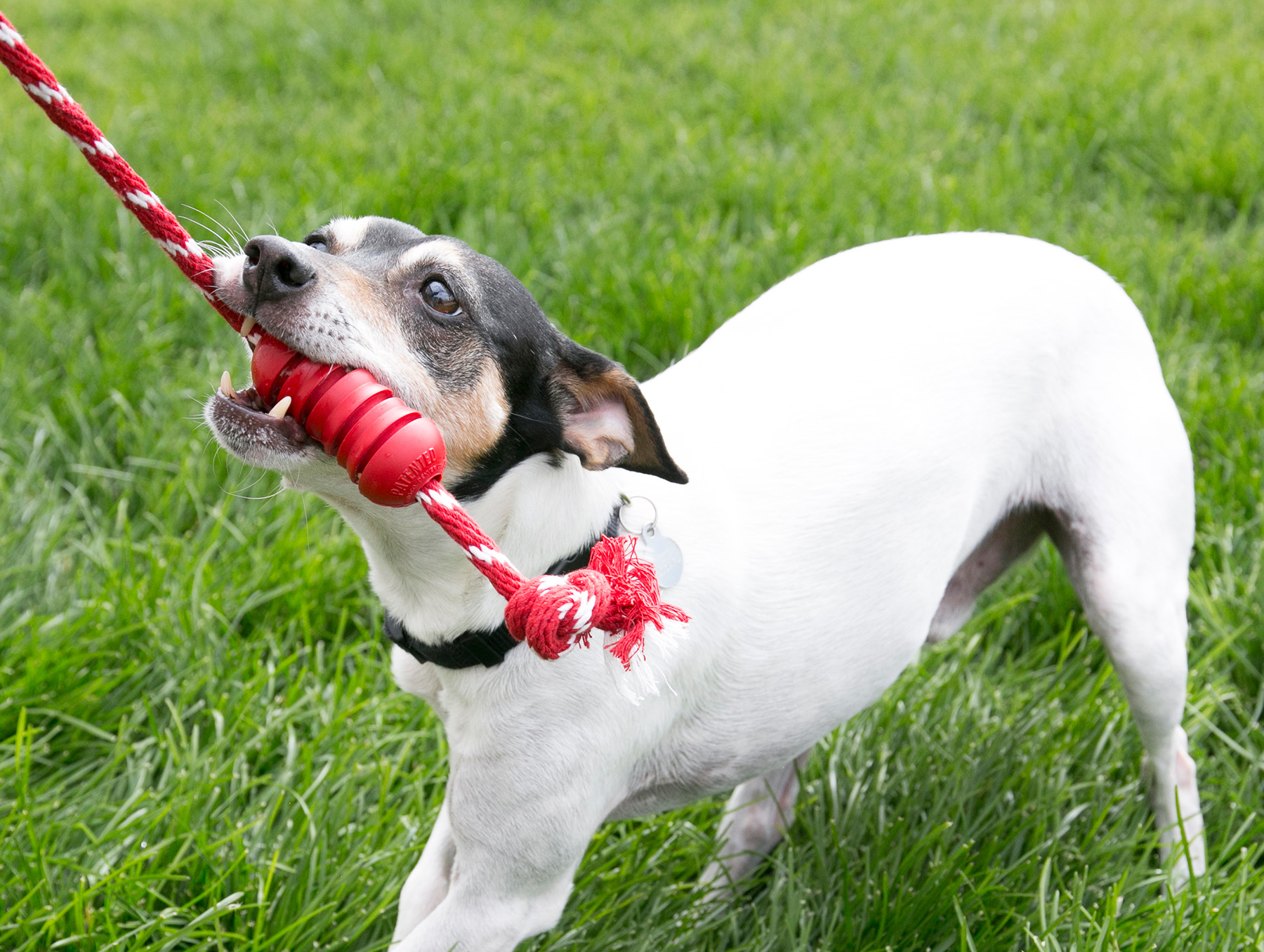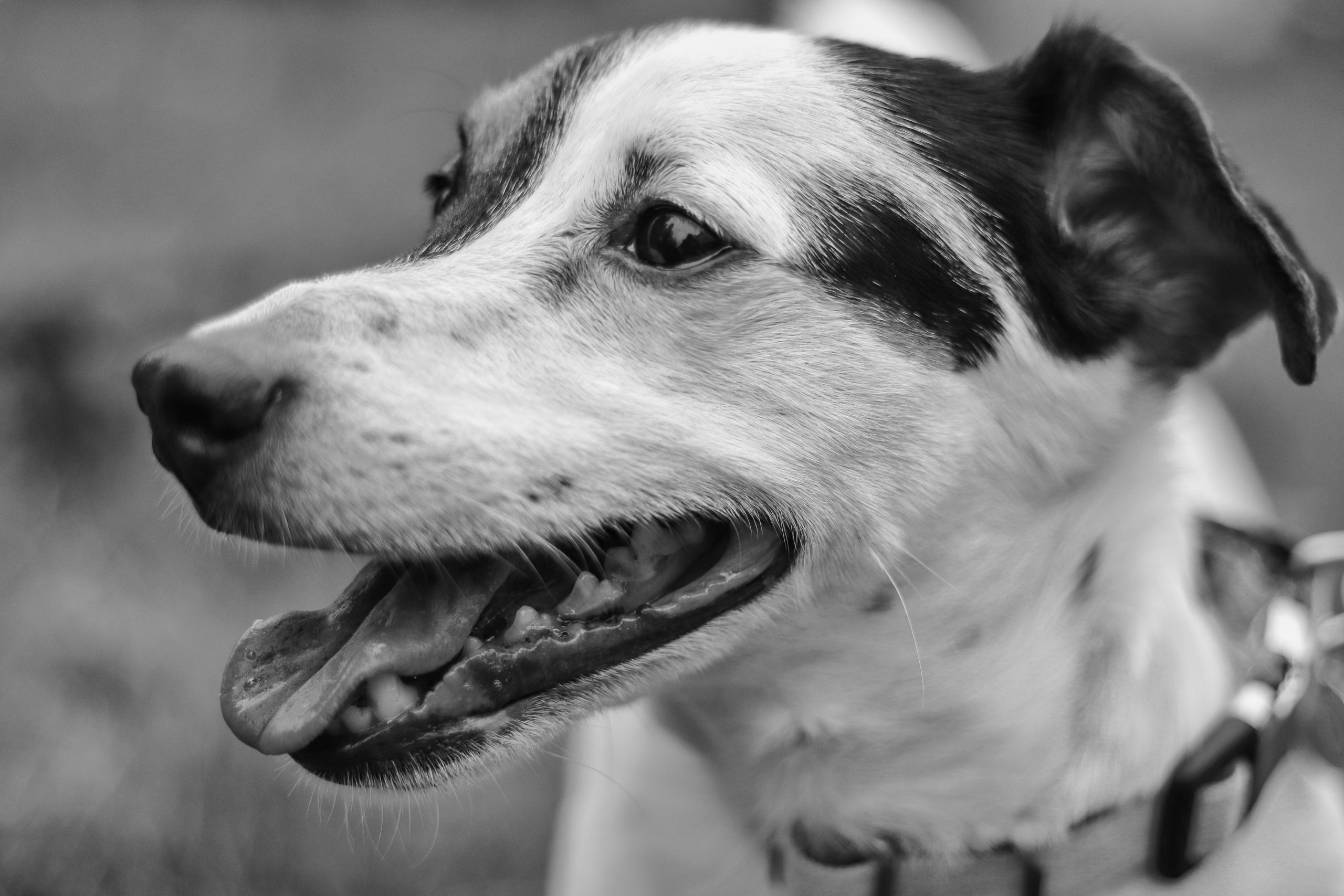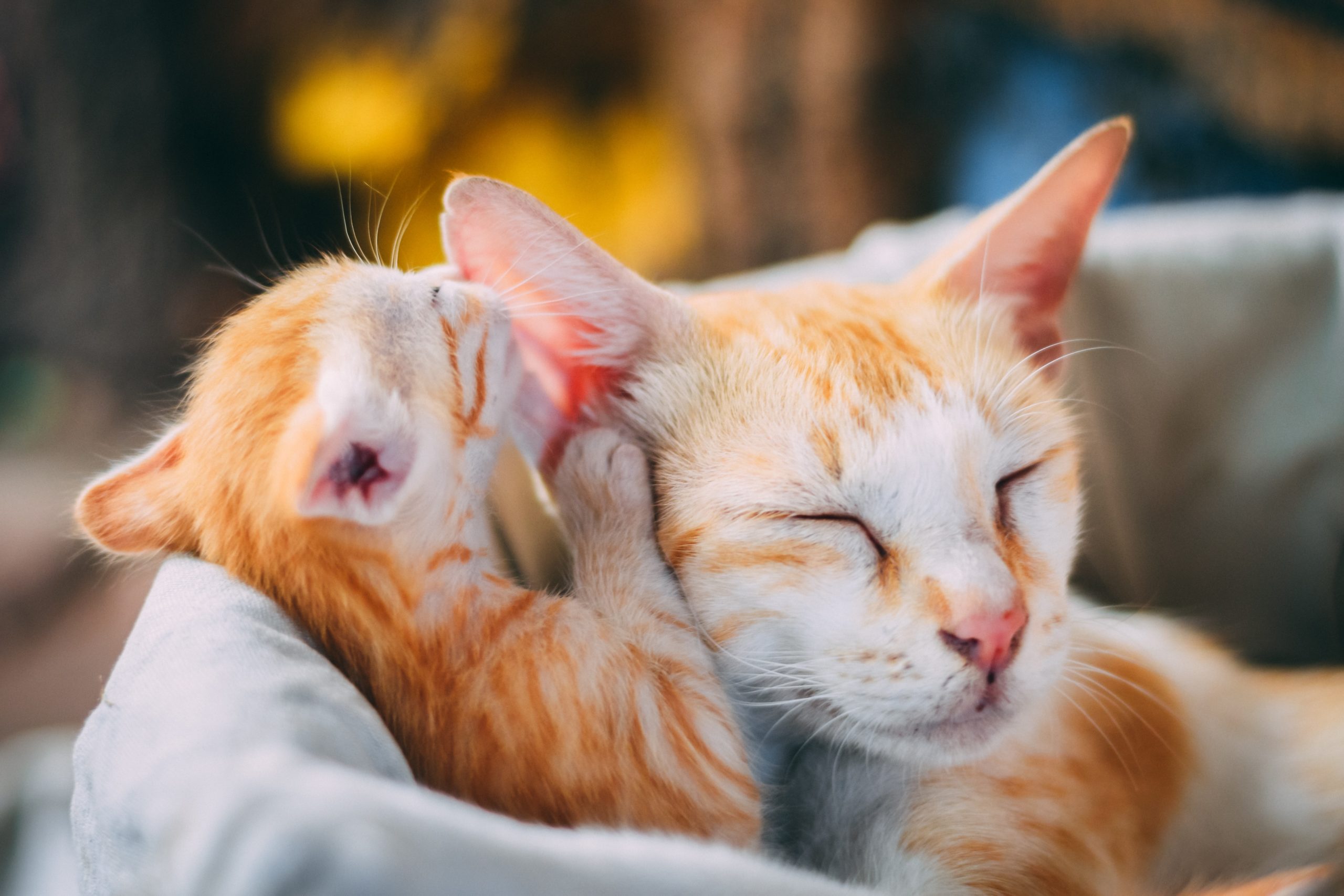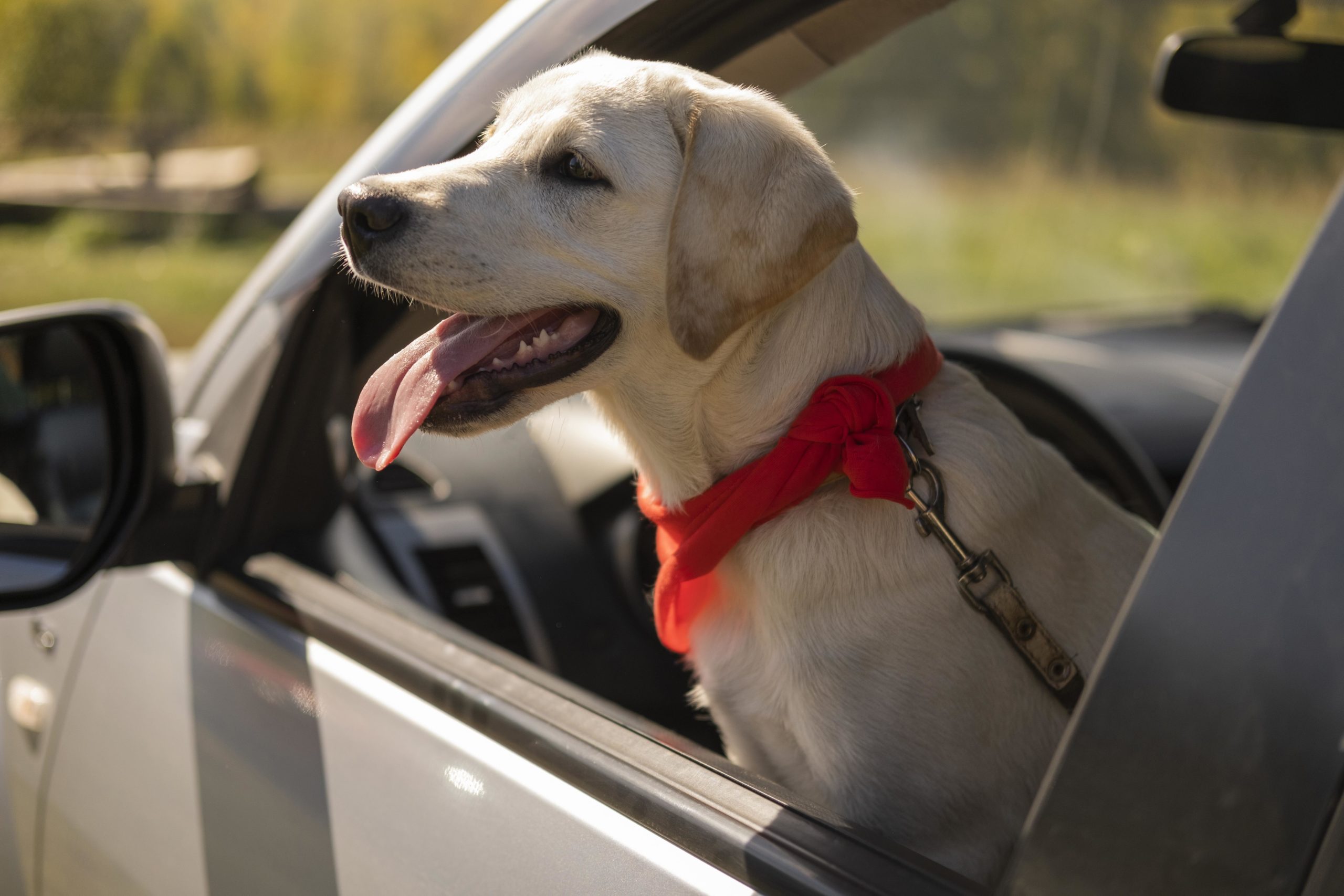In the past, many trainers have advised people against playing tug with their dog. Conventional wisdom dictated that the behaviour would promote competition and cause aggression.
Thankfully, we now know better. Tug play has been found to be a cooperative game that can be used to facilitate learning and establish boundaries. Whilst tugging is an arousing and stimulating game, through its established rules, dogs can learn impulse control and good manners. Tug games can be used as a valuable reinforcement tool to reward good behaviour.
Tug games are an interactive indoor/outdoor game that can be played with most dogs, provided that everybody plays by the rules. Once these rules have been established, tug games can be used as a legal outlet for a bit of rough-housing that helps strengthen bonds and build healthy relationships. Playing tug can provide a useful distraction when redirecting certain inappropriate behaviours and can be utilised as reinforcement in behaviour modification. For mouthy puppies, playing tug can be a useful way to redirect inappropriate use of teeth whilst establishing impulse control parameters.
Benefits of playing tug with your dog
- Tug play is an interactive bonding activity that facilitates relationship building.
- It provides an exercise outlet for the dog and a way to burn off excess energy.
- Playing by rules helps to improve impulse control and encourage good manners.
- It redirects a dog’s use of its mouth to a more appropriate object.
- It’s fun – for both dogs and their human companions!
Who should not play tug
- Owners or dogs who have a medical condition or injury that precludes them from vigorous play.
- Dogs who have existing underlying aggression issues and resource guarding.
- Unruly dogs who just can’t seem to learn to play by the rules and insist on putting their teeth on skin despite owners best efforts to teach them otherwise. (These dogs may be better suited to fetch and retrieve focussed games)
Things to consider
Like all games, tug has rules. While they may seem simple, rules are necessary to maintain control of the game, when it starts, when it stops and everything in between.
Pick a tug toy that your dog enjoys
The toy you choose should be sturdy enough to withstand vigorous pulling, stretching, and shaking. Provide a toy that is long enough to keep the dog’s teeth away from hands and also one that is comfortable to hold in your hand. Remember once the game is over the toy is to be put away, therefore it doesn’t have to withstand rough chewing or gnawing.
Relinquish toy on cue
Most dogs don’t need to be taught to grab a toy and pull. The real trick is teaching them to let go of it. This is done by combining two cues, a verbal cue with a physical action. Say a word such as “Drop” or “Give” (just once) and then hold very still. After a second or so, prompt the dog to release the toy by putting a tasty treat on the ground or near their nose. After a few repetitions your dog will begin to anticipate and relinquish the toy when they hear the word.
Keep reinforcing the desired behaviour with food after saying your word. Before long, you’ll be able to set the treats aside. You’ll simply use a relinquish cue and reinforce the behaviour by offering the game again.
No grabbing without permission
Tug is a game of stop and start. Once your dog has released the toy and you have it in your possession, remain still. Ask your dog to sit before inviting them to play another round. This is where we pair a verbal cue that invites them to take the toy “Take it” or “Get it”. The verbal cue is up to you. If they do grab the toy without permission, don’t play. Remain still and cue the relinquish word, wait until you have the toy secured and that they are still before inviting them to play again.
At first, keep the play sessions short (30 seconds or so), before cueing “Give” again and gradually increase the time the more responsive your dog becomes.
Teeth on skin = Game Over
Tug is a great way to teach your dog to be more careful and gentle with human skin. If your dog’s teeth accidentally grab your skin or clothes instead of the tug toy (don’t panic, it happens), give a verbal “Oops” and end the game for a minute or two. Simply walk away. Your dog will soon learn not to miss and to only put their teeth on the toy if he wants to keep playing.
Troubleshoot the overstimulated dog
If the dog is overstimulated and refuses to relinquish the toy, let go of the toy and walk away – if the dog won’t play by the rules then you won’t play with the dog. Plain and simple.
If the dog follows you, you can ask the dog to sit. If he or she complies, reach for the toy and once again ask for the dog to release the toy. If he or she leans back and tries to engage tug then once again release the toy and walk away. However if he or she releases the toy, tell them they are a good dog and offer them to take the toy for a game. The play is the reinforcement for the dog’s compliance and teaches him that their deference is more likely to make the game happen.
Children and tug
Children should not play tug unless you are confident that both parties will play by the rules and even then, always do so under direct supervision. Children small enough to be pulled over by the dog should not play tug as the dog may unintentionally pull them over and cause injury.
Game On, Let’s Play!
- OK, we are ready to play. Start by holding out the toy. If the dog lunges at the toy say “Oops” and hide the toy behind your back. After all, snatching is bad manners and it’s your toy. They can only grab hold once it is offered.
- When the toy can be held out in front of the dog and he or she doesn’t lunge for it, but rather continues to remain sitting, tell them to “Take it!” and encourage them to grab it by moving it around within his or her reach. If the dog is reluctant, be gentle until he or she learns the game. If they are keen, go for it!
- Randomly throughout play ask for the dog to “Give” and relinquish the toy. Use a treat where necessary as an added incentive for the trade. Once you have the toy you can begin again through steps 1 and 2. You should win more often than not – that is, you end up with the toy in your possession. On the rare occasion you can allow the dog to pull the toy away from you which usually results in the dog parading around for a victory lap.
- If you are playing and teeth make contact with you, say “Oops!” in a cheerful voice because you aren’t angry but you are letting the dog know which behaviour has caused the game to end. Ask for the toy and put it away, resume the game after a brief period of time has passed.
- Be mindful to only tug with the dog from side-to-side and let them do most of the work, never up-and-down i.e. don’t shake the sheets, this could potentially cause injury to your dog’s spine. Regulate the vigour of your play to the size and age of the dog.
- When you are done playing, put the toy away out of the dog’s reach until next time.
Tug play may elicit a lot of healthy noise. Don’t equate growling and snarling with aggression, when paired with a relaxed body stance in the context of play, it is often an indicator of arousal and enjoyment. However, if in doubt end the game.
Just one last rule. Remember that this is a game. Smile at your dog, tell them when they are being good and laugh out loud at their crazy antics. In other words, have fun!





